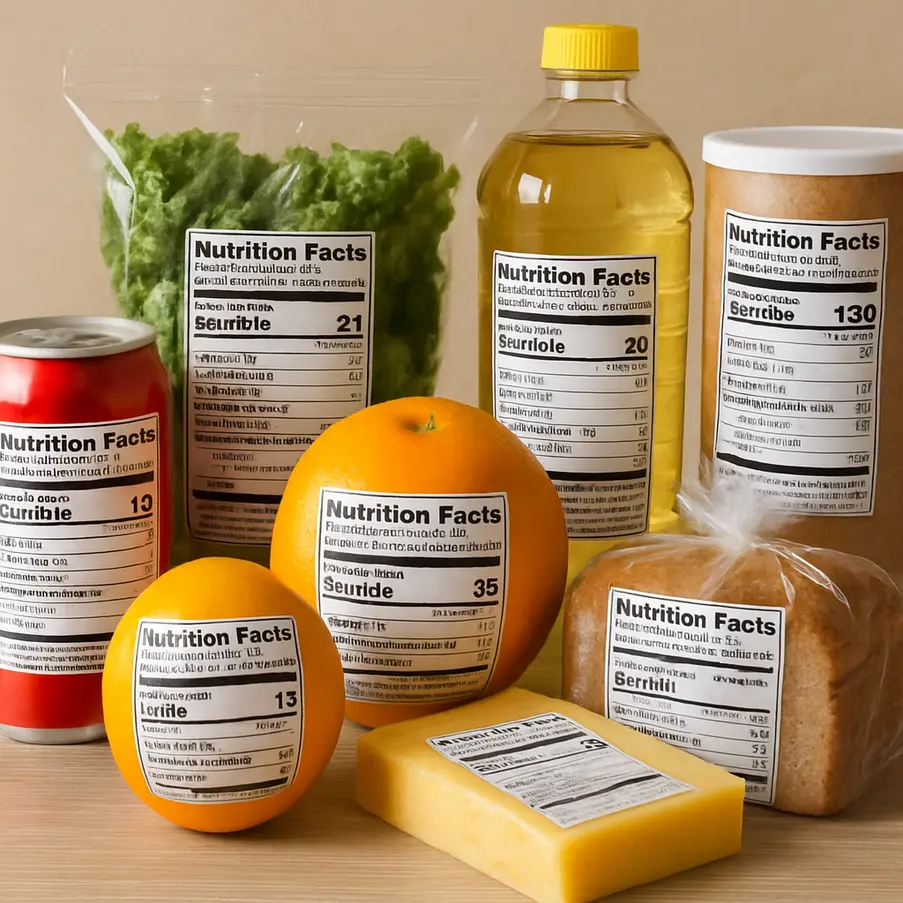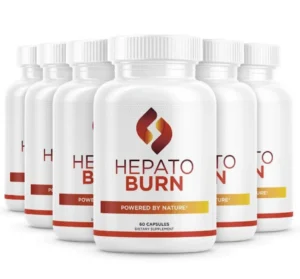Food Labels and Nutrition Facts
Grasping the intricacies of food labels and nutrition facts is essential for making informed, healthier choices in your diet. With a multitude of products on the shelves, each flaunting various claims, it’s vital to understand what’s genuinely nutritious and what’s merely marketing. This guide will delve into the art of reading food labels, deciphering nutrition facts, and comprehending terms that are crucial to maintaining a balanced diet. Armed with this knowledge, you can navigate your nutritional needs more effectively, ensuring your health and well-being are under control.
The Fundamentals of Understanding Food Labels
Unpacking the information on food labels is imperative for making healthier food choices. At the heart of this understanding lies the serving size, the ingredients list, and various health claims, each contributing uniquely to informed dietary decisions.
The serving size, often highlighted at the top of the Nutrition Facts panel, provides a standardized measure that helps us compare products. Pay attention to this detail, as it affects the nutritional values listed. A common pitfall is assuming the entire package represents one serving, leading to the overconsumption of calories, fats, and sugars.
Next, let’s delve into the ingredients list. Here, components are ordered by quantity, starting with the largest amount. Keep an eye out for ingredients you may want to limit or avoid, such as added sugars or saturated fats. An insightful tip is to look for whole food-based ingredients, as these are typically more beneficial for your health.
Health claims can be tempting but should be approached with scrutiny. Claims like “low-fat” or “natural” are often indicators of healthier options but confirm by reading the full label. For example, “low-fat” doesn’t necessarily mean low-calorie. Understanding claims can prevent misconceptions and guide you towards more nutritious selections.
In navigating food labels, familiarity with terms like “Daily Value” is essential. These percentages help you gauge how a serving of the food fits into a daily diet, usually based on a 2,000-calorie intake. It’s a useful tool for managing nutrient intake but should be personalized to your dietary needs.
Equipped with this knowledge, you’re better positioned to evaluate how different foods align with your health goals. For a more in-depth look at balancing nutrition, consider checking out Balanced Nutrition for Optimal Health. It offers insights into creating a well-rounded dietary plan.
By mastering the basics of food labels, you lay the foundation for healthier eating habits. This understanding empowers you to transform your shopping and dining experiences, ultimately supporting a more balanced and nutritious lifestyle.
Decoding Nutrition Facts
Understanding Nutrition Facts Panels can feel like deciphering a secret code. Yet, these panels hold the key to making informed food choices. Let’s break down each section to clarify what they mean and how they impact your health.
Daily Values (DV%): These percentages provide a quick insight into how much a nutrient in a serving contributes to a daily diet. They’re based on a 2,000-calorie diet and help assess nutrient intake quickly. For example, a product with 20% DV of Vitamin C offers a substantial portion toward your daily requirement.
Calories: This is a measure of how much energy you get from a serving. It’s crucial to balance calorie intake with energy expenditure, especially if you’re managing your weight or engaging in fitness routines. Our Balanced Nutrition for Optimal Health post provides more on maintaining this balance.
Fats: The label distinguishes between total fat, saturated fat, and trans fat. Saturated and trans fats are potent contributors to heart disease. Opt for products with lower saturated and zero trans fats. Look for foods with healthier fat sources like nuts or avocados.
Carbohydrates: Carbs are vital for energy. However, focus on getting them from vegetables, fruits, and whole grains. The label will specify total carbs, fiber, and sugars. High fiber content is beneficial, aiding digestion and providing a feeling of fullness. Limit added sugars to maintain optimal health.
Proteins: Essential for muscle building and repair, protein amounts vary depending on dietary needs. Active individuals might require more protein compared to those with sedentary lifestyles.
Sodium: High sodium intake often causes high blood pressure. Aim for items indicating lower sodium percentages, especially if packaged or processed foods are part of your diet.
Serving Size: Often overlooked yet critical, this indicates the quantity that the nutritional information covers. Eating larger portions means consuming higher amounts of calories and nutrients than printed. Always compare serving sizes to your portion sizes to avoid misunderstandings.
By taking the time to understand these sections, you can make choices that support your lifestyle and dietary needs efficiently. Whether you’re looking to manage your weight, support fitness goals, or just live healthily, these insights are an invaluable part of the journey.
Understanding Food Labels and Nutrition Facts: Applied Knowledge
Unpacking food labels can seem daunting, but applying this understanding can significantly improve your meal planning and dietary choices. Serving size is a crucial first step; it determines the entirety of the nutritional facts provided. For instance, if one serving is half a cup but your portion is a full cup, you must double the values listed.
When meal planning, comparing calories and macronutrients across products helps align your diet with your health goals. If you’re following a specific diet, such as a plant-based plan, precisely understanding these values helps prioritize selections that provide balanced nutrition. Explore our balanced nutrition for optimal health guide for more insights.
Daily Values (DV) are another essential component. They help gauge how a particular food fits into the daily nutrient requirements based on a 2,000-calorie diet. Pay attention to ingredients like sodium, sugars, and saturated fats, which can quickly add up. Foods with 20% or more DV of a nutrient are high, while those with 5% or less are low. If you’re looking for weight management ideas, foods lower in unhealthy nutrients can assist you in maintaining a healthy weight.
Navigating misleading claims is vital for making informed choices. Words like “natural” or “made with whole grains” can be deceiving if the overall nutritional content is poor. Check the ingredients list—items are listed by weight, so those appearing first are present in the highest quantities. A claim like “low fat” doesn’t necessarily mean low in sugar or calories, so scrutinize all nutritional aspects.
Ultimately, understanding food labels empowers you to tailor your meal preparation to your nutritional needs more accurately. This practical knowledge supports healthier, more informed choices, avoiding pitfalls of unchecked claims and assumptions. Making sense of these labels effectively turns shopping trips into opportunities for smart choices aligned with your well-being goals.
Hepato Burn Product
How Food Labels Influence Consumer Choices
Food labels are more than just informational; they shape choices subtly yet significantly. The presence of buzzwords like organic, low-fat, and natural on packaging can sway decisions at the grocery store. But why do these terms hold such power over our shopping behavior?
Understanding consumer psychology is key. Terms like organic suggest higher quality and better health benefits. Many consumers associate organic products with minimal pesticide use and environmental sustainability, prompting a willingness to pay a premium price. However, organic doesn’t always mean healthier. It’s important to examine nutritional content alongside the organic label to make truly informed decisions.
Similarly, low-fat products appeal to health-conscious individuals. They evoke perceptions of weight loss and heart health benefits. Yet, low-fat doesn’t automatically equate to a healthier option. Oftentimes, companies compensate for taste loss by adding sugars or artificial ingredients, which might negate the anticipated benefits. Therefore, scrutinizing total calorie count and ingredient lists is crucial for those opting for low-fat labels.
Then there’s the ambiguous term natural. Many consumers perceive it as a hallmark of minimal processing and absence of synthetic additives. Yet, the term ‘natural’ lacks stringent regulatory definition, making it essential to read labels thoroughly. Relying solely on the word ‘natural’ can lead to assumptions that aren’t always accurate regarding nutritional value.
The design and language of food labels are crafted to attract specific target groups, often by leveraging emotional triggers. Bright colors and health-oriented images work to enhance the appeal of health-related terminologies. Savvy marketers know this can play a decisive role in final purchase decisions.
In essence, while food labels can significantly impact consumer choices, knowledge and mindfulness are powerful tools in deciphering them. Taking the time to understand labels beyond their face value can lead to healthier and more satisfying food choices. For more on how to maintain balanced nutrition amidst overwhelming food options, check out our detailed guide.
Final words Food Labels and Nutrition Facts
By mastering the art of understanding food labels and nutrition facts, you empower yourself to make healthier dietary decisions that align with your nutritional needs and lifestyle. As someone committed to your well-being, I invite you to continue exploring our content for more insights into health and nutrition—knowledge that can prove transformative in your personal journey. Remember, every piece of information adds up to a healthier you.




